The coconut, often referred to as the “tree of life,” holds immense cultural, nutritional, and economic value in many tropical regions around the world. Its versatility is unmatched — every part of the coconut palm (Cocos nucifera) has practical use, from the water and flesh inside its fruit to its leaves, husks, and timber. Coconuts are staples in culinary traditions, religious rituals, and natural medicine, while also being important export commodities for several developing economies.
While numerous tropical countries cultivate coconuts, one nation stands out globally for both the scale of its production and its historical connection to this iconic tree: Indonesia. As the world’s largest and most famous coconut producer, Indonesia’s coconut industry plays a vital role in the nation’s economy, culture, and agricultural sector.
This article explores Indonesia’s leadership in global coconut production, examines the global coconut industry, highlights other key producing countries, and discusses the economic, cultural, and nutritional importance of this extraordinary crop.
A Brief Overview of Coconuts
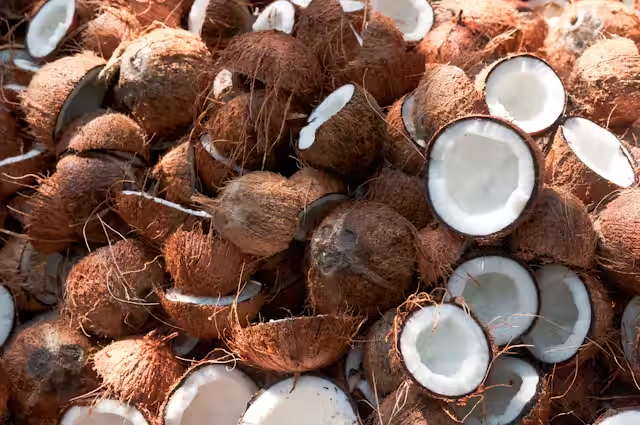
The coconut is the fruit of the coconut palm, a tropical tree that thrives in humid coastal climates and well-drained sandy soils. It is native to the Indo-Pacific region but has spread widely across tropical and subtropical regions worldwide.
Coconuts serve multiple uses:
- Coconut water – A popular natural drink rich in electrolytes.
- Coconut milk and cream – Used in cooking and desserts.
- Copra – Dried coconut kernel used for extracting coconut oil.
- Coir – Fiber from the husk, used in ropes, mats, and brushes.
- Timber and leaves – Used for construction and handicrafts.
Nutritionally, coconuts are high in healthy fats, potassium, dietary fiber, manganese, and antioxidants, making them a valued food item in many diets.
Which Country Produces the Most Coconuts Globally?
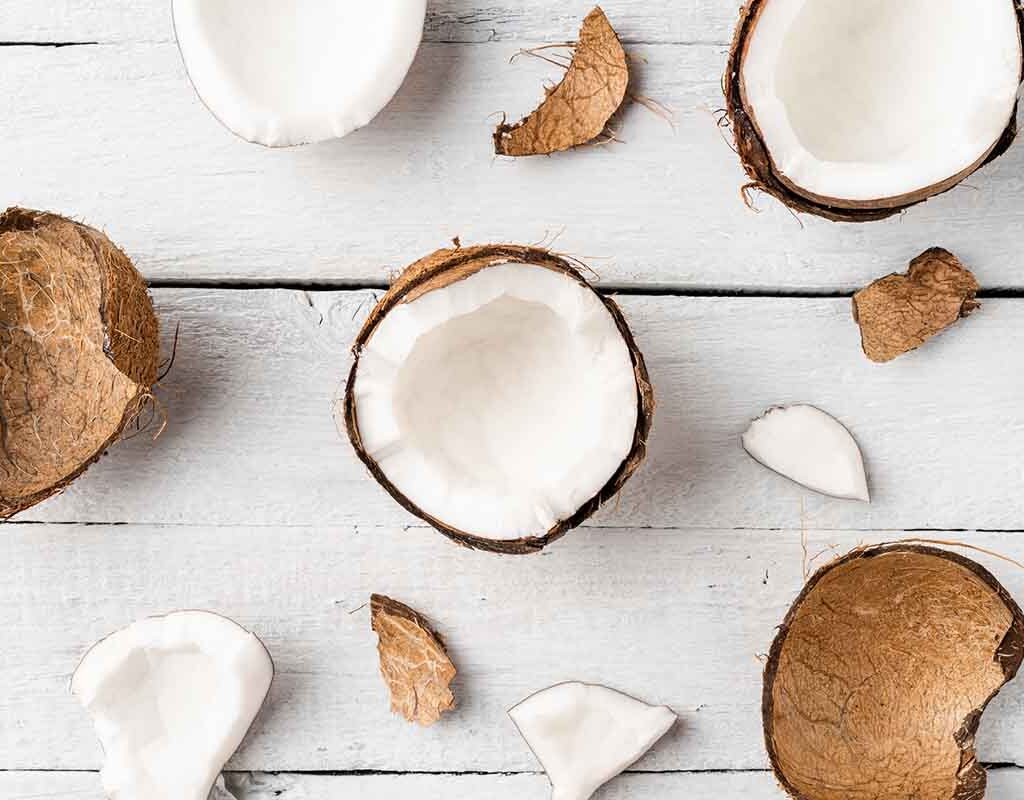
According to the latest data from the Food and Agriculture Organization (FAO) and international agricultural research, Indonesia is the largest coconut producer in the world, followed closely by the Philippines and India.
Global Coconut Production Snapshot (2024 Estimate)
| Rank | Country | Annual Production (Metric Tons) |
|---|---|---|
| 1 | Indonesia | 18.5 million |
| 2 | Philippines | 14.7 million |
| 3 | India | 14.2 million |
| 4 | Sri Lanka | 2.5 million |
| 5 | Brazil | 2.3 million |
Indonesia contributes over 30% of the world’s total coconut production, maintaining its reputation as the foremost coconut-growing nation for decades.
Why Is Indonesia Famous for Producing Coconuts?
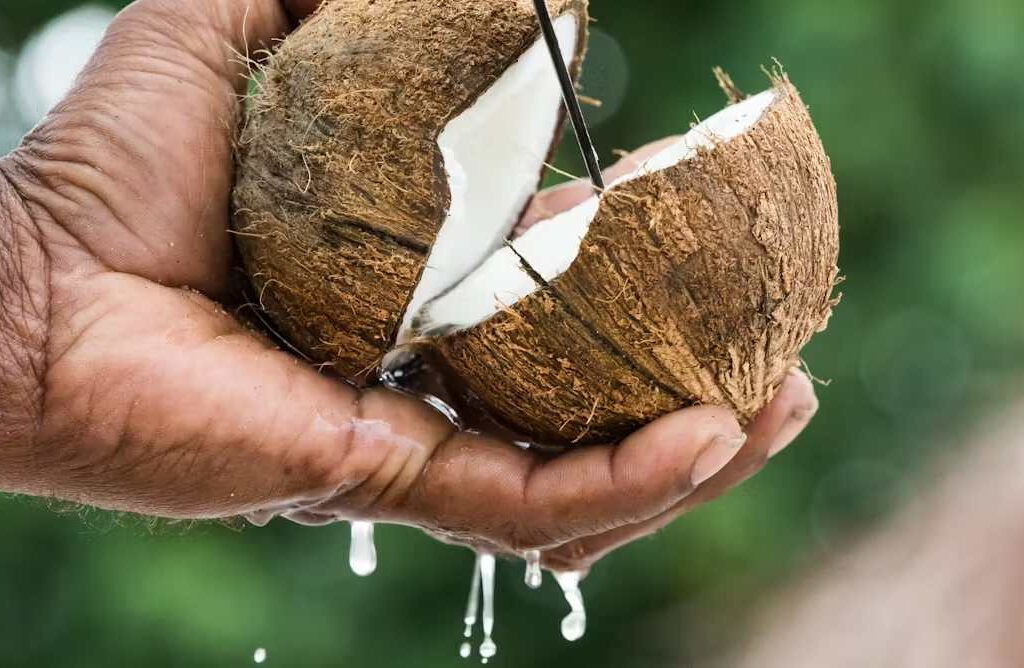
Several factors have established Indonesia as the global leader in coconut production:
1. Ideal Growing Conditions
Indonesia is blessed with a tropical, humid climate featuring consistent rainfall, warm temperatures, and fertile coastal soils — conditions that are ideal for coconut palms. The country’s 13,000+ islands provide vast areas of coastline and lowland plains perfect for coconut farming.
Major coconut-producing regions include:
- North Sulawesi
- Central and East Java
- Sumatra
- Maluku Islands
- Bali and Lombok
2. Large Cultivated Area
Indonesia dedicates approximately 3.4 million hectares to coconut cultivation, the largest area globally. This extensive plantation network allows for both subsistence and commercial farming, meeting domestic consumption and export demands.
3. Cultural and Economic Importance
Coconuts have deep cultural significance in Indonesian traditions, ceremonies, and cuisine. From religious offerings to dishes like rendang, soto, and coconut rice (nasi uduk), coconuts are integral to everyday life.
Economically, coconuts support over 5 million Indonesian farmers, providing livelihoods for rural communities and contributing significantly to the national economy through copra, coconut oil, desiccated coconut, and activated carbon exports.
4. Versatile Product Portfolio
Indonesia not only produces coconuts for fresh consumption but also leads in the production of:
- Copra (dried coconut meat)
- Coconut oil
- Virgin coconut oil (VCO)
- Desiccated coconut
- Coir fiber
- Coconut charcoal and activated carbon
This product diversification enhances the industry’s resilience and profitability.
5. Government and Institutional Support
The Indonesian government actively promotes coconut cultivation through:
- Farmer training programs
- Subsidies for replanting and disease management
- Export facilitation initiatives
- Agro-industrial development projects
Other Major Coconut-Producing Countries
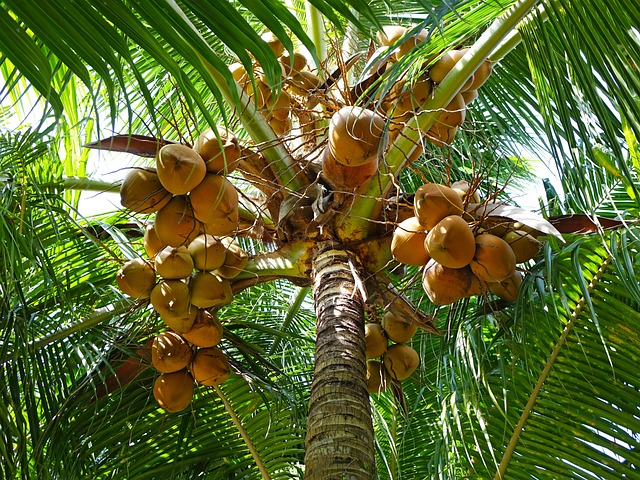
While Indonesia leads the world, other nations play vital roles in the global coconut industry:
1. Philippines
Known as the “Coconut Capital of the World” in terms of exports, the Philippines cultivates coconuts on over 3.2 million hectares, primarily in Mindanao, Visayas, and Luzon. The country is a leading exporter of coconut oil, copra, and desiccated coconut, with a well-developed processing sector.
2. India
India is the world’s third-largest coconut producer, with significant cultivation in Kerala, Tamil Nadu, Karnataka, and Andhra Pradesh. Coconuts are deeply embedded in Indian religious, culinary, and social traditions. India excels in producing coconut oil, coir products, and coconut-based sweets.
3. Sri Lanka
Sri Lanka’s coconut industry supports over 600,000 families, with production concentrated in the Coconut Triangle region. The country is known for its high-quality coconut oil, coir, and desiccated coconut exports.
4. Brazil
Brazil leads South America in coconut production, particularly in the Northeastern states of Bahia and Ceará. Fresh coconut water is a major product for domestic consumption and export.
Economic and Nutritional Importance of Coconuts
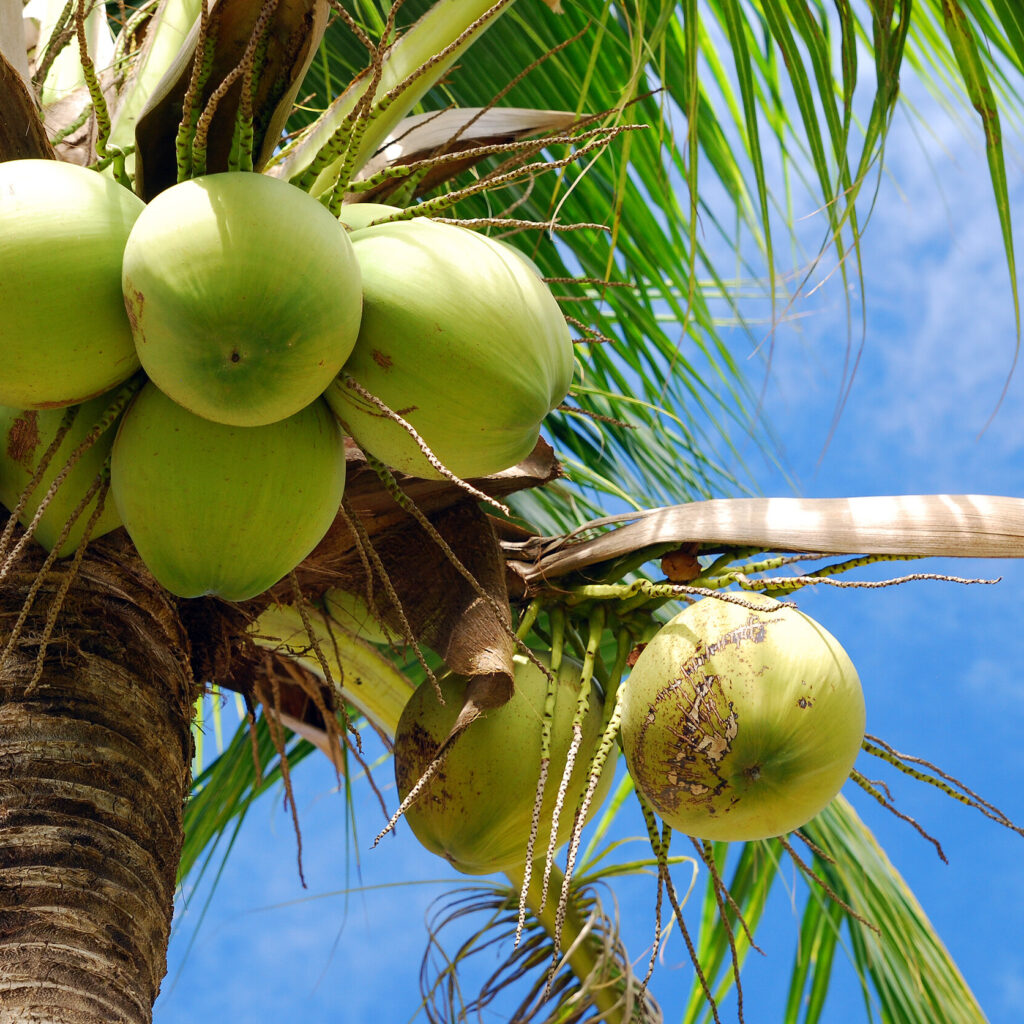
1. Economic Contribution
Globally, coconuts are a vital cash crop, generating billions of dollars annually through:
- Agricultural employment
- Domestic sales and exports
- Value-added product industries
In Indonesia, the coconut sector contributes significantly to the GDP of rural provinces and strengthens smallholder farming systems.
2. Nutritional and Health Benefits
Coconuts offer a rich nutritional profile:
- Coconut water – A natural electrolyte drink.
- Coconut meat – High in dietary fiber and medium-chain triglycerides (MCTs).
- Coconut oil – Used in cooking and skincare.
Coconut products are linked to improved heart health, weight management, and hydration.
Challenges Facing Coconut Cultivation
Despite its global importance, the coconut industry faces challenges:
1. Aging Plantations
Many plantations in Indonesia, the Philippines, and India have aging trees, reducing productivity. Replanting programs and improved seed varieties are needed.
2. Climate Change
Increased frequency of typhoons, droughts, and temperature fluctuations threatens yields and tree health.
3. Pests and Diseases
Issues like rhinoceros beetles, coconut mites, and lethal yellowing disease pose risks to coconut palms.
The Future of Coconut Production
With rising global demand for organic, health-centric products like coconut water, virgin coconut oil, and coconut-based plant milks, the coconut industry is expected to expand. Key future developments include:
- Adoption of disease-resistant, high-yielding cultivars
- Sustainable farming practices
- Increased mechanization
- Improved value chain infrastructure
Indonesia, with its vast resources, experienced farmers, and government support, is poised to maintain its leadership in this evolving market.
Conclusion
To conclude, Indonesia is the largest and most famous coconut-producing country in the world, contributing over 18.5 million metric tons annually and supplying over 30% of global production. The country’s tropical geography, vast cultivation areas, cultural attachment to coconuts, and diversified product portfolio ensure its enduring dominance in the global coconut industry.
While other nations like the Philippines, India, and Sri Lanka play vital roles, none match Indonesia’s combination of volume, cultural depth, and economic integration. As global demand for coconut-based foods, beverages, and wellness products continues to rise, Indonesia’s coconut sector is well-positioned for sustained growth, innovation, and global influence.




Leave A Comment